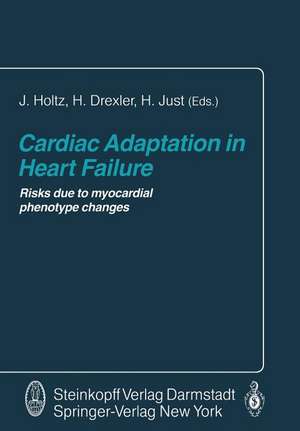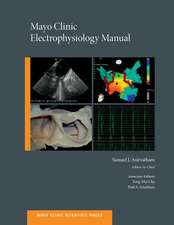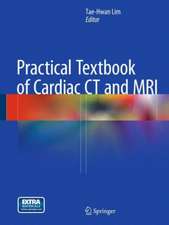Cardiac Adaptation in Heart Failure: Risks due to myocardial phenotype changes
Editat de J. Holtz, Helmut Drexler, Hansjörg Justen Limba Engleză Paperback – 21 dec 2011
Preț: 713.33 lei
Preț vechi: 750.88 lei
-5% Nou
Puncte Express: 1070
Preț estimativ în valută:
136.49€ • 142.51$ • 112.97£
136.49€ • 142.51$ • 112.97£
Carte tipărită la comandă
Livrare economică 05-19 aprilie
Preluare comenzi: 021 569.72.76
Specificații
ISBN-13: 9783642724794
ISBN-10: 3642724795
Pagini: 220
Ilustrații: VIII, 206 p. 26 illus.
Dimensiuni: 170 x 244 x 15 mm
Greutate: 0.36 kg
Ediția:Softcover reprint of the original 1st ed. 1992
Editura: Steinkopff
Colecția Steinkopff
Locul publicării:Heidelberg, Germany
ISBN-10: 3642724795
Pagini: 220
Ilustrații: VIII, 206 p. 26 illus.
Dimensiuni: 170 x 244 x 15 mm
Greutate: 0.36 kg
Ediția:Softcover reprint of the original 1st ed. 1992
Editura: Steinkopff
Colecția Steinkopff
Locul publicării:Heidelberg, Germany
Public țintă
Professional/practitionerCuprins
Biological adaptation of the myocardium to a permanent change in loading conditions.- Role of protein kinase system in the signal transduction of stretch-mediated myocyte growth.- Sympathetic modulation of the cardiac myocyte phenotype: studies with a cell-culture model of myocardial hypertrophy.- Growth factors, growth factor response elements, and the cardiac phenotype.- Signaling mechanisms for the activation of an embryonic gene program during the hypertrophy of cardiac ventricular muscle.- Endothelial modulation of myocardial contraction: mechanisms and potential relevance in cardiac disease.- The regulation of calcium cycling in stressed hearts.- Energetics of calcium cycling in nonfailing and failing human myocardium.- Spontaneous sarcoplasmic reticulum Ca2+ release leads to heterogeneity of contractile and electrical properties of the heart.- Afterdepolarizations and triggered activity.- The contribution of nonreentrant mechanisms to malignant ventricular arrhythmias.- The potential role of Ca2+ for electrical cell-to-cell uncoupling and conduction block in myocardial tissue.- Failure of myocardial inactivation: a clinical assessment in the hypertrophied heart.- Diastolic dysfunction in pressure-overload hypertrophy and its modification by angiotesin II: current concepts.- Mechanisms of cardiac growth. The role of the rennin-angiotensin system.- Cardiac fibroblasts: function, regulation of gene expression, and phenotypic modulation.- Modulation of myocardial sarcoplasmic reticulum Ca++ -ATPase in cardiac hypertrophy by angiotensin converting enzyme?.




